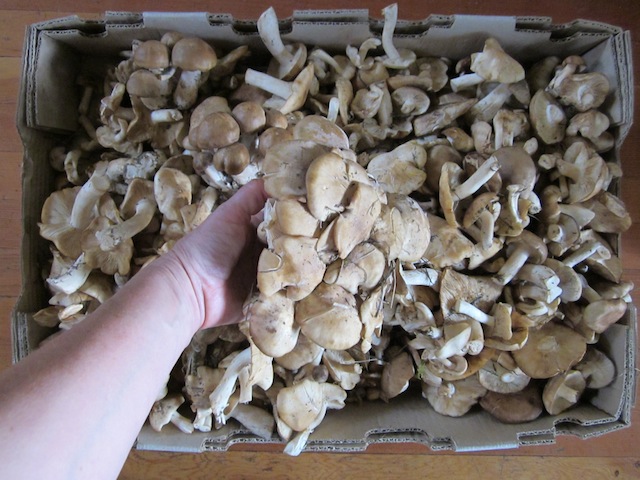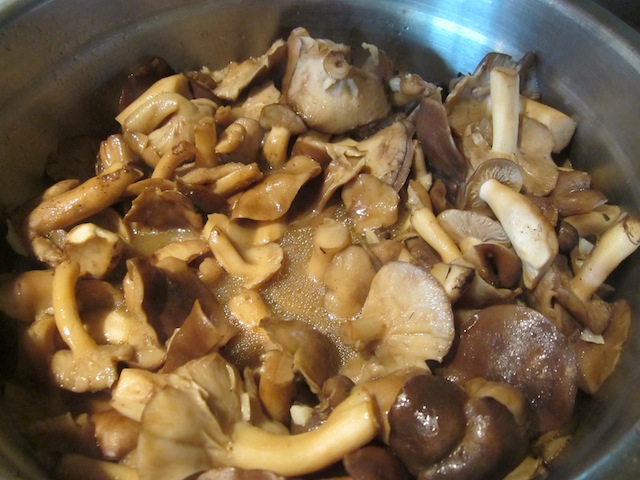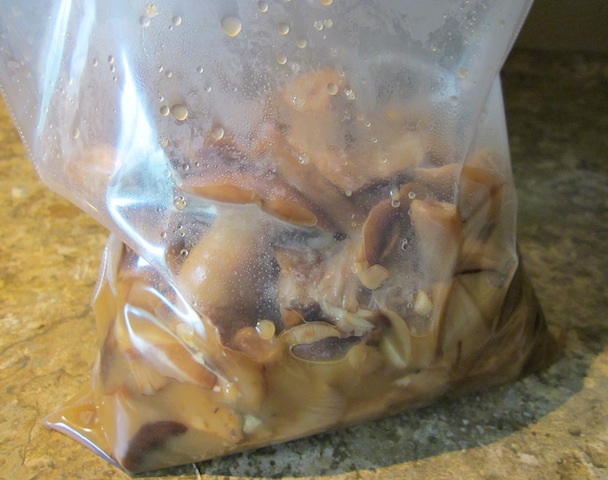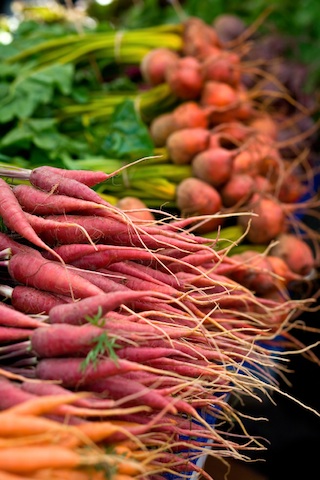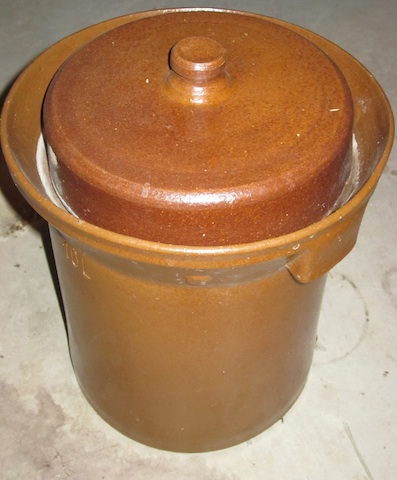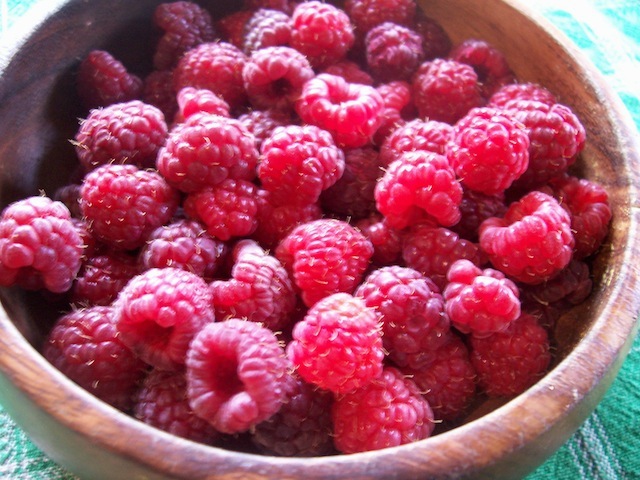
These raspberries were picked fresh from my garden. I froze over 150 pounds of raspberries that my family will enjoy all winter long.
With the beginning of summer, it’s hard to think about the cold snowy months ahead. This is the time of year to be thinking about storing food for the winter. If you spend some time now, you will save money and have higher quality food for the winter.
Try to source your storage foods from certified organic farms or farms that follow organic principles. I really like u-pick farms because the fruit is very fresh, and if I like the fruit, I can go back next year to the same place. This really reduces the time required to find new farms as the years go by.
If money is tight, ask neighbors that don’t spray their trees if they would allow you to pick the fruit for a portion of the harvest. Don’t be shy. I have knocked on doors of homes after seeing fruit falling into the alley and collected hundreds of pounds of free fruit.
I even collect the fruit that is too far gone for human consumption and feed the fruit to our chickens and hogs. Many people really appreciate someone else cleaning up the fruit trees and are very happy to share the bounty. Also, we have hogs and chickens on our leased land. If you have free waste fruit that you would like to recycle, our hogs will be very happy to oblige!
The first step is to identify your favorite fruits and know what is grown in your area. My favorite local fruits that I freeze are strawberries, cherries, raspberries, blueberries and tomatoes. I dry apricots, plums and apples. I will try canning peaches this year. Here are some u-pick sources I have used in the past.
The second step is to estimate out how much fruit your family will consume in a year. By doing this, you will make it to the next growing season without having to buy small, expensive packages from the grocery store. The numbers are usually quite large and over the years you will get a sense of your family’s personal consumption.
When I am harvesting for freezing, I use large freezer zip-lock bags. I fill the bags only half full for easier storage. With the fresh fruit, I lay the freezer bags in one layer until the fruit is frozen. This avoids crushing the fruit which can form a solid block which is difficult to use. Later I stack my freezer bags carefully to avoid wasting space.
For strawberries, I remove the tops in the field before bagging and freezing. For cherries I pit, bag and freeze. With raspberries, I place the fresh fruit on a glass tray in the freezer overnight and then bag the frozen fruit. Blueberries go straight into the bag and into the freezer. With tomatoes I freeze them whole without removing the skin. I sometimes remove the tomato core if it is large and fibrous.
You can freeze apricots, plums and apples. I prefer to dehydrate these fruits. If you have never dehydrated fruit before a good book is called Dry It, You’ll Like It! by Gen MacManiman. This book has everything you will need to know about drying anything and even has plans for building a dehydrator.
Here are two postings that may be helpful for someone who has never thought about winter storage before: Winter Storage I and Winter Storage II. These two postings will give some guidance about how to prepare for the winter.

